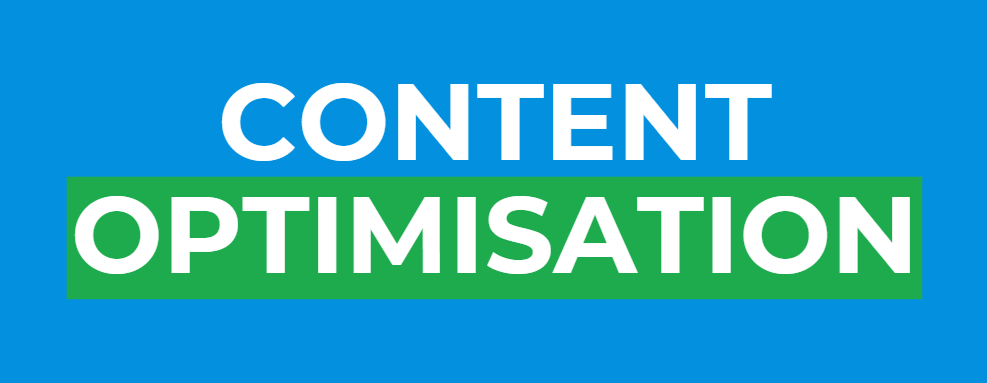
Businesses succeed when people trust them enough to buy their products. In order to do this, businesses must demonstrate integrity and high standards. They must show themselves to be trustworthy individuals who can be trusted with the sale of their goods. To achieve this, they must create brand awareness and build customer loyalty.
However, that’s where it gets really complicated. You see, there are many ways for you to captivate your target audience. Some include running astronomical and epic ads, producing compelling blog posts, and creating shareable videos that incite a viewer’s interest and anticipation.
All of these marketing tactics share one characteristic - they require content creation.
Content doesn't just describe a company; it helps sell a company's products and services, and proves its expertise in the industry.
If you want your content to be read by humans, you must optimise it not just for search engines but for humans too.
You’ll learn all there is to know about content optimisation, including the following topics:
- What it is
- How it works
- And how to optimise different types of content.
But first, let’s review what content optimisation is.
Optimising content means taking any kind of content — ebooks, articles, videos, etc., and optimising them so they perform better than they would if left alone. "Text-based" content includes tweaks to make content better for search engines because they don't lose their human appeal.
On-Page Optimisation is one of several sub-disciplines of search engine optimization (SEO). It aims at optimising content within web pages for better results. So, when people say “content,” their minds usually go straight to text, but there’s so far more to the field of content marketing than just text.
Read more.
Content includes many different types of things, including:
- Pictures
- Infographics
- Video
- Podcasts
There isn't "one best" way to create content for any company. For some organisations, they may want to focus their efforts on creating highly engaging blog posts; whereas others might be better off focusing on videos. So, it would really depend on what type you’d want to create and be consistent about that as well.
Content optimisation involves technical tasks plus some editorial and marketing aspects. It is not something that can be done immediately.
While constantly working with our clients in optimising their sites, we've seen some significant improvements within half a year but usually require longer for any material changes to take effect. It's an ongoing process that requires commitment.
If you want to start a blog or any type of online business, you really need to know what you're doing before attempting to create your first post. Otherwise, you risk wasting a lot of time and effort creating something that won't get visitors.
That is why it is important to have the required knowledge to do things yourself. If not, then you will definitely need the help of experts like us who can work with you on SEO content optimisation. We can ensure that our team is always on the look for Google’s latest algorithm, so your content is always up to date with the latest changes.
Content doesn't matter unless people can find it. That's why optimising your content is so important to content marketing success. So even if you decide to learn everything there is to know regarding content marketing, it’s something you need to keep up with.

Now let’s dive straight into the important part - how to optimise content for SEO. Read more for the best content optimisation tips.
Here we’ve broken the whole process down into 9 distinct steps. These are broad explanations that can cover any type of content.
-
Study your competitors to get the best keywords.
Before you can optimise your content, you must know what your competition is up to and you need to know what kind of audience you're trying to attract. You then use keyword research to determine which keywords would be most effective at attracting them. You can then use tools like Google’s Keyword Planner to research relevant keywords and topics to focus on when creating content. It’s also important to take search intent (i.e., where people go when searching) into account here. You want to make sure that the keywords you choose to target get traffic on the SERPs, are relevant to your business, and address the specific intent of your audiences as not to salvage your organic rankings. Also, you can look for relevant terms that have good search volumes that have less competition. Remember, there are opportunities for content optimisation in long tail keywords and "niche" terms. You should also look for semantically related keywords. They're similar to the ones you want to target, so they might be good candidates to reach out to potential leads.
-
Decide on your content format.
Get to know what kind of format you’d want for your content. Decide whether you’d go for more written content, diagrams, or videos. However, for that decision to be relevant to your content’s optimisation, you must check what content format your target audience would want to see from you. Aside from that, regularly check what your competition is doing. This is not about doing a full-on George Lazenby-esque espionage but it’s simply peeking into what makes their content appealing to the audience. Once you know that, you can work on creating better content.
-
Create then post.
Next, it’s time for you to create your content and post them on the platform where they will be viewed most by your target audience. When you create your content, always keep in mind the keywords related to it. Just make sure you are including them in your content naturally and not make it look forced that it will be awkward to view or read it. What can you do with the keywords? Include the keywords in every page’s title tag and meta description. Make sure you optimise the headers with keywords, including the important questions, that would be recognised by the search engine crawlers and the visitors. So you’re done with the keywords. You must now ensure that your content is informative of the topic you are creating it for. This will grow the length of time that visitors will spend on your site and allows the search bots to find your page. By doing this, you are making sure that you are an authorised entity for that topic and get your site on top of the SERP.
-
Use inbound links.
Links are important for search engine optimization (SEO). By adding links to other pages on the site, you're letting Google know that these pages are worthy of appearing on the first page of results when people type certain keywords into the search bar.
-
Use easy to read headlines.
Your headline is the first impression visitors get from your page. Make sure it's easy for them to skim and doesn't take too long to read.
-
Write informative content.
People who visit your website aren't just looking for entertainment. In fact, they're not even looking for entertainment. They're looking for something else entirely. You can provide them with the answer to one of their most pressing needs – by creating a helpful article filled with valuable information. Take advantage of what people already know and write about. Write an informative piece of content that helps users solve their problems and provide the best ways to get around their current concerns.
-
Stay consistent with your tone.
You must keep your writing consistent across your articles. Don't change your tone halfway through an article. Make sure everything remains consistent so your readers don't get confused.
-
Question and answer.
This advice goes hand in hand with giving out informative content. Asking people questions helps them learn more about you and provides them with helpful information.
-
Be creative.
Writing isn’t just always about serious stuff. Try to incorporate something fun and humour into your content. Some viewers would appreciate that and would want to see more of what you have in store next. To conclude, the best way to optimise content for SEO is to make sure you're constantly creating and publishing great content. There are many different ways to go about SEO content writing, but here’s a recap on some basic tips to get you started and you need to remember:
- Post unique content.
- Optimise your content so that it works well on smaller screens.
- Use keywords.
- Use pictures.
- Social media buttons—Facebook, Twitter, Google Plus, Pinterest.
- Be consistent.
- Make sure you link internally to pages within your site.
- Always share your content.
- Get feedback.
- Measure your success.
- Measure ROI.
- Keep improving.
And last but not the least – don't forget to enjoy yourself while creating content. When you are enjoying while creating your content, it will show on the results. So, keep having fun whilst ensuring the quality of the content you are producing.
How can we assist you?
Our mission is to help you achieve your site’s online rank and recognition. Whether they involve increasing traffic to your site, improving conversions, or just making your site more user friendly, we're here to help. Get in touch with us now for a consultation.
Suggested Read: Why Should You Use Pillar Page in your SEO Strategy?

